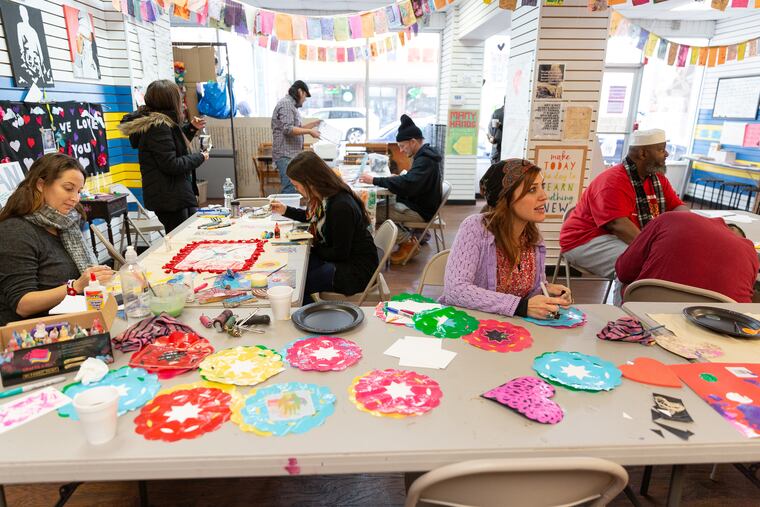Finding hope at the Kensington Storefront Hub | Opinion
The activities at the Storefront reduce isolation, build acceptance, and engage people — both those struggling with addiction and those in recovery.

The opening days of 2019 continue to remind us that the impact of the opioid epidemic, both in Philadelphia and across the nation, is profound. But there are glimmers of hope in our city. We can build on that hope if we take this moment to reflect on the sources of the affliction, and support efforts to rebuild individual lives and reshape communities.
More than 10 years ago, when Mural Arts first partnered with the City’s Department of Behavioral Health and Intellectual disAbility Services (DBHIDS), the agency was in search of innovative strategies to connect people to mental health and substance-use disorder treatment. They wanted a creative solution that might better engage individuals and address the complex knot of mental illness, addiction, housing insecurity, poverty, and racism.
Social isolation can create the conditions for estrangement from family, alienation from community, and disconnection from services. When we feel isolated, it can worsen the symptoms of mental illness and addiction, and deepen the challenging effects of trauma.
We believe we can begin to reverse this pattern of isolation. At the Storefront Hub in Kensington, a once-empty store has become a thriving community center — a place of hope. Here, Mural Arts and dedicated partner agencies (Impact Services, Prevention Point, and New Kensington Community Development Corporation) have been working together since March of 2017 to support resilience and recovery.
The Storefront serves as a workshop for visiting artists, a safe space for neighbors, and a learning hub for anyone interested in art-making, personal and public safety, or self-care. Certified peer specialists — people with lived experience — play a vital role in welcoming community members and connecting them to treatment, services, and supports as requested.
The model is intentionally interdisciplinary and uses multipurpose spaces with a complex and nuanced fabric of services, programming, support, education, and activity. The activities at the Storefront reduce isolation, build acceptance, and engage people — both those struggling with addiction and those in recovery.
Mural Arts textile artist Kathryn Pannepacker, who has worked at the Storefront for almost 18 months, teaches weaving on Tuesdays. The goal of each session is to create two small weavings on a handheld tapestry loom: one to share with the group and one to tie onto your own wrist during the closing ritual for the day’s activities.
The Healing Blanket Project’s intent is to offer belonging, meaning, and purpose to the lives of those who work and make with Pannepacker. At the end of each weekly session, participants reflect together on what they have made that day, and reinforce their participation in the group — a connecting bridge to which they return with increasing regularity.
As the city implements the Philadelphia Resilience Project, its new, coordinated approach to fighting the opioid epidemic and revitalizing the Kensington area, we envision expanding the Hub’s role as a connector. We will continue to reduce isolation among different kinds of neighbors and provide a platform for the voices and choices of the community. When given space to grow, hope can be the first step toward sustainable renewal.
Jane Golden is executive director of Mural Arts Philadelphia.